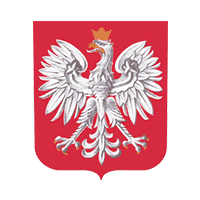Eugeniusz KRAUSE, Piotr LITWA
The publication discusses the research acquis of the Central Mining Institute of the Experimental Mine "Barbara" in the field of combating methane risk in Polish hard coal mines. As a result of more than 20 years of research, principles and guidelines for assessment and design of mining works in methane fields were developed in the form of instructions. The most important of them are:
1. Rules for classifying workings (rooms) in methane fields into individual levels of explosion risk in coal mining plants [9].
2. Rules for classifying workings in methane fields in coal mining plants as hazardous into methane explosion risk levels [4].
3. Rules for airing excavations under methane hazard conditions, including the selection of ventilation devices to mitigate it [6].
4. Dynamic forecast of absolute wall methane-bearing capacity [7].
5. Principles of working longwalls under methane hazard conditions [8].
6. Principles of designing mining works under conditions of combined methane and fire hazard [5].
All these studies provided mine engineering staff with tools for assessing methane risk at the stage of designing and conducting mining works, as well as allowed for the selection of preventive actions.
Tomasz STĘPIEŃ, Małgorzata ULMANIEC
The article compares the forecasts of deformation of the rock mass and surface land form with the observations and measurements made by the “Wieliczka” Salt Mine. Under the impact of rock mass pressure, empty post-mining spaced undergo the natural process of slow and gradual contraction. In order to determine the impact of mining on the surface of the site, the mine monitors the deformation of the surface and the rock mass, consisting of leveling measurements on the surface and measurements of convergence in underground workings. On the basis of these measurements, an analysis of surface settlement, mine levels and convergence of workings was carried out in order to obtain calculation parameters used to prepare the impact forecast. The forecast was prepared using a mathematical model to predict deformation of the rock mass and the land surface (the so-called Knothe theory). The impact forecast assumes the presence of surface settlement in a vast zone extended to the W-E, with several local synclines within its area (fig. 5-8). The results of mine measurements are compared with the results of the forecast, showing their high correlation. The forecast results may therefore form the basis for spatial planning and land development. According to the forecast, a maximum increment is expected between 2012 and 2037: vertical displacements up to wmax = 0.53 m, horizontal deformations up to εmax = 2.95 mm/m and slopes in the profile of the syncline up to Tmax = 4.53 mm/m. The above values correspond at least to the 2nd category of mining area.
Robert TYRAKOWSKI, Tomasz SZPILKA
The article presents the transport of materials in the L-VI shaft at KGHM Polska Miedź S.A. O/ZG "Lubin". Due to the absence of underground rail transport routes in the area of the L-VI shaft, it was necessary to use containers dedicated to various types of materials whose carrier is a mining lift transporter located outside the shaft. Container transport from warehouses on the surface, through a shaft to the underground logistics center, is an interesting alternative to transport by underground rail.



